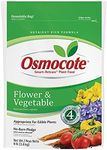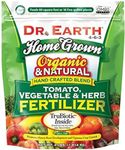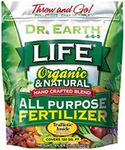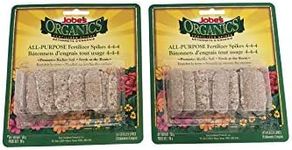Buying Guide for the Best Fertilizer For Garlic
Choosing the right fertilizer for garlic is essential for healthy growth and a bountiful harvest. Garlic is a nutrient-hungry crop that benefits from a balanced supply of essential elements throughout its growing season. When selecting a fertilizer, it's important to understand what nutrients garlic needs, how they affect growth, and how to match the fertilizer to your soil and gardening style. By focusing on a few key specifications, you can ensure your garlic gets the best possible start and continues to thrive.NPK RatioThe NPK ratio stands for Nitrogen (N), Phosphorus (P), and Potassium (K), which are the three main nutrients in fertilizers. Nitrogen helps with leafy growth, phosphorus supports root and bulb development, and potassium aids overall plant health and disease resistance. For garlic, a balanced or slightly higher phosphorus content is often preferred, especially at planting time, to encourage strong root and bulb formation. Fertilizers with higher nitrogen are useful in the early stages, while lower nitrogen and higher potassium/phosphorus are better as bulbs start to form. To pick the right NPK ratio, consider your soil test results and the stage of garlic growth: early growth needs more nitrogen, while bulbing needs more phosphorus and potassium.
Fertilizer Type (Organic vs. Synthetic)Fertilizers come in organic and synthetic forms. Organic fertilizers are made from natural materials like compost, manure, or bone meal, and they release nutrients slowly, improving soil health over time. Synthetic fertilizers are manufactured and provide nutrients quickly and in precise amounts. If you prefer a natural approach and want to build long-term soil fertility, organic fertilizers are a good choice. If you need fast results or want to target specific nutrient deficiencies, synthetic fertilizers may be more suitable. Your gardening philosophy and how quickly you want to see results can help guide this choice.
Release Speed (Slow-Release vs. Quick-Release)Release speed refers to how quickly the nutrients become available to the garlic plants. Slow-release fertilizers break down gradually, providing a steady supply of nutrients over time, which is helpful for consistent growth and less risk of burning the plants. Quick-release fertilizers deliver nutrients rapidly, which can be useful if your garlic shows signs of deficiency or needs a boost. If you want low-maintenance feeding and steady growth, slow-release is ideal. If you need to correct a problem quickly, a quick-release option may be better.
Micronutrient ContentBesides the main NPK nutrients, garlic also benefits from micronutrients like sulfur, magnesium, and calcium. These help with flavor, disease resistance, and overall plant health. Some fertilizers include these micronutrients, while others do not. If your soil is already rich in micronutrients, you may not need extra, but if you notice poor growth or pale leaves, a fertilizer with added micronutrients can help. Soil testing or observing plant health can guide whether you need a fertilizer with these extras.
Form (Granular, Liquid, or Powder)Fertilizers come in different forms: granular, liquid, or powder. Granular fertilizers are easy to spread and work well for slow-release feeding. Liquid fertilizers are mixed with water and provide quick results, making them good for foliar feeding or when plants need an immediate boost. Powdered fertilizers are often dissolved in water and can be used similarly to liquids. If you want convenience and long-lasting effects, granular is a good choice. If you prefer to feed your plants more frequently or want to address deficiencies quickly, liquid or powder forms may be better.

















